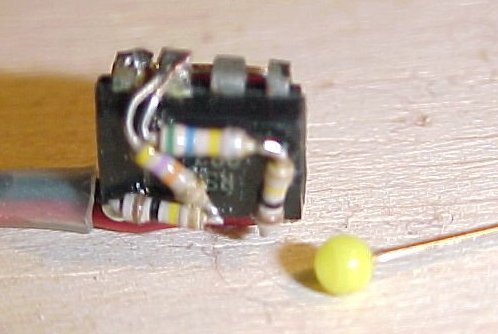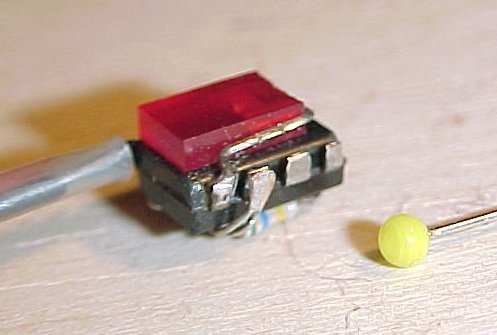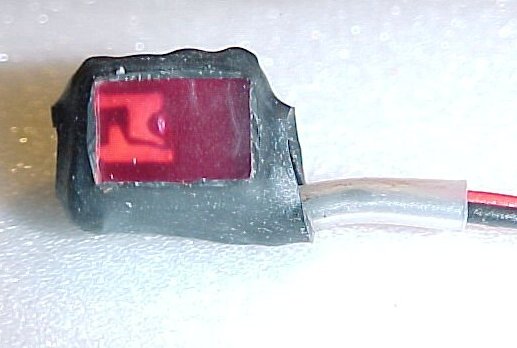
Lithium batteries, both Lithium-Ion (Li-Ion) and Lithium Polymer (Li-Poly) cannot be discharged below about 3 volts per cell without ruining the battery. The normal approach is to use a special electronic speed controller (ESC) to ensure that the batteries are not discharged too far. An alternative is to use a programmable ESC that allows you to set the cut-off point, although getting it wrong could be expensive.
A cheaper approach is to use some form of indicator to tell you when the batteries are approaching the danger point. Commercial units are available which switch on an light emmitting diode (LED) at a preset voltage. As I had some suitable IC's from an earlier project, I decided to make my own.

The IC concerned is an ICL 8211. The bad news is that, having checked Maplins, Electrovalue, etc. I can't find a current stockist. I have a data sheet, dated 1994 which came from Maplins and it seems unlikely that they have been discontinued.
However, back to the plot. By using this IC, plus 2 resistors and an LED you can produce a simple low voltage detector which will turn on the LED at a predetermined voltage. The resistor values chosen give a switch on point at 6.3 volts (for 2 cells) or 9.5 volts (for 3 cells). - nominally around 3.2 volts per cell. Actually, the LED will start to glow at around 6.7/10 volts and will be fully switched on at the desired voltage. Current consumption in the switched on state is 7 mA and virtually nothing when switched off.


Click on the pictures for a larger image.
The photos show the version that I built for two cells. I didn't have the exact resistor values required so made them up from values which I had (100k + 47k and 560k + 100k). I used 1/20 watt resistors because I had them. You could use 1/8 watt resistors but the result will be bigger. Finally, enclose things with heatshrink tubing when you are happy that it works.

You can use any LED. I made two different versions using a flat type and a very small high intensity type. The colour is unimportant. Note that you could use a flashing LED and/or mount it remotely from the IC.
The circuit shown was designed to give some safety margin and the rule is, 'Charge when the light comes on'. Note that the light will go out if you remove the load and it is possible to 'feather' the throttle to a point just below illumination if you MUST have the maximum flight time. Further reading on the subject has revealed that the figure of 3 volts per cell is, itself, conservative and the real danger point is 2.3 volts per cell.
The unit should, ideally, be mounted on the input side of the ESC. It's small enough to be mounted on the ESC with tape. You could mount it permanently across the battery itself since the consumption is so low. However, note that you only have a few hours to charge it once the light comes on. Failure to do so will ruin the battery. Even at 7 mA, it won't go on for ever!
